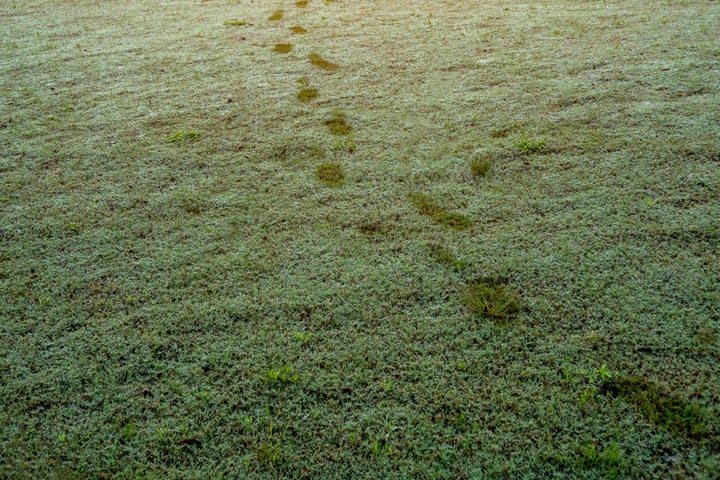
If you’ve got a garden, you probably keep a pretty keen eye out for signs of disease, pests and other lawn maladies.
It’s especially important in summer when weeds flourish and garden invaders are rampant.
You might already know to track browning leaves, wilting stems and fuzzy, mouldy soil.
But it turns out that there’s another early sign that your garden is suffering – spotting footprints, even on a perfectly healthy-looking patch of grass, could be a sign your lawn is in need of some TLC.
Here are the types of footprints that should cause concern – and what to do if you notice the issue.
How to run a ‘footprint test’ on your lawn
The ‘footprint test’ couldn’t be easier to do – you just have to step onto your grass and watch the reaction.
As the University of Illinois shared, you should worry if stepping on your lawn causes it to maintain the shape of your shoe.
If your footprints remain on the lawn after walking across it, they suggest your garden is likely to be on the verge of drying out, and could already be suffering with something called drought stress.
It sort of works like the pinch test when checking for dehydration. Dry skin or grass is less able to ‘bounce’ back from pressure, because its lack of moisture affects its turgidity.
The less water your grass has when you step on it, the slower it’ll be to spring back to its original shape. The test could help to reveal dryness before clearer signs of dehydration, like browning and wilting, are visible.
It’s especially handy in the middle of our current heatwave, when drying lawns can creep up on gardeners regardless of how careful they are.
OK, what can I do if my lawn is drying out?
Luckily, the footprint test works well on lawns in the early stage of dehydration. So it’s very likely your garden can still be saved at this stage.
The Royal Horticultural Society (RHS) advises against mowing in extreme heat, and recommends using rainwater to hydrate ailing lawns if you have any to hand.
And while it can be tempting to run out and start watering every time you spot a symptom of drought stress, it turns out that quality and quantity are much more important than frequency when it comes to quenching your lawn’s thirst.
To encourage water penetration, the RHS says that “watering more thoroughly, but less frequently helps get the water down to the deeper root tips”.
In any case, knowing exactly how well your grass is faring is always a step (sorry) in the right direction.